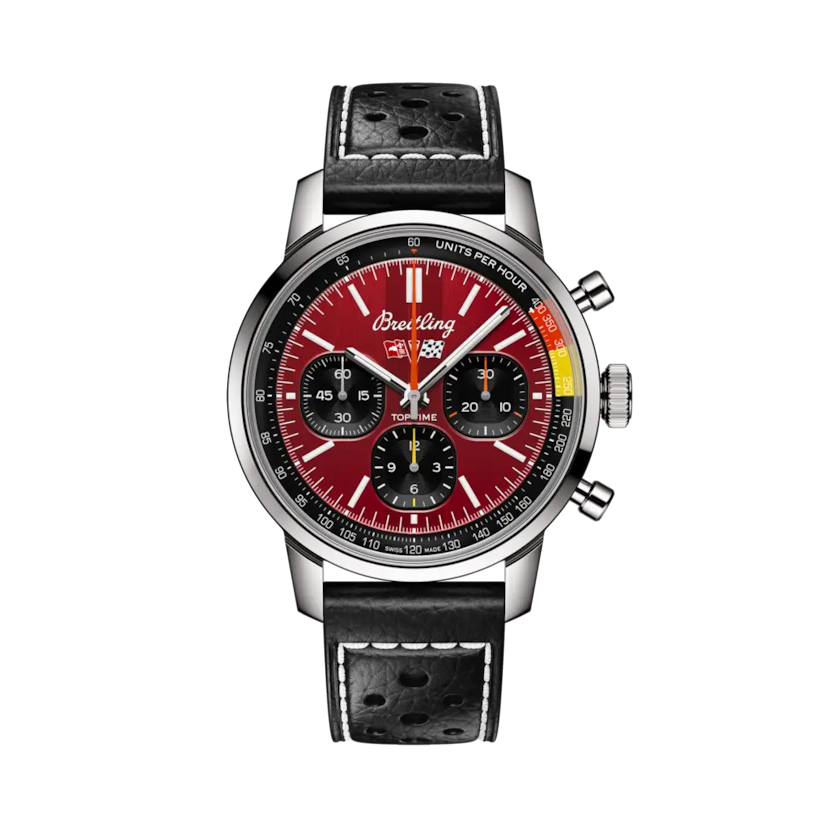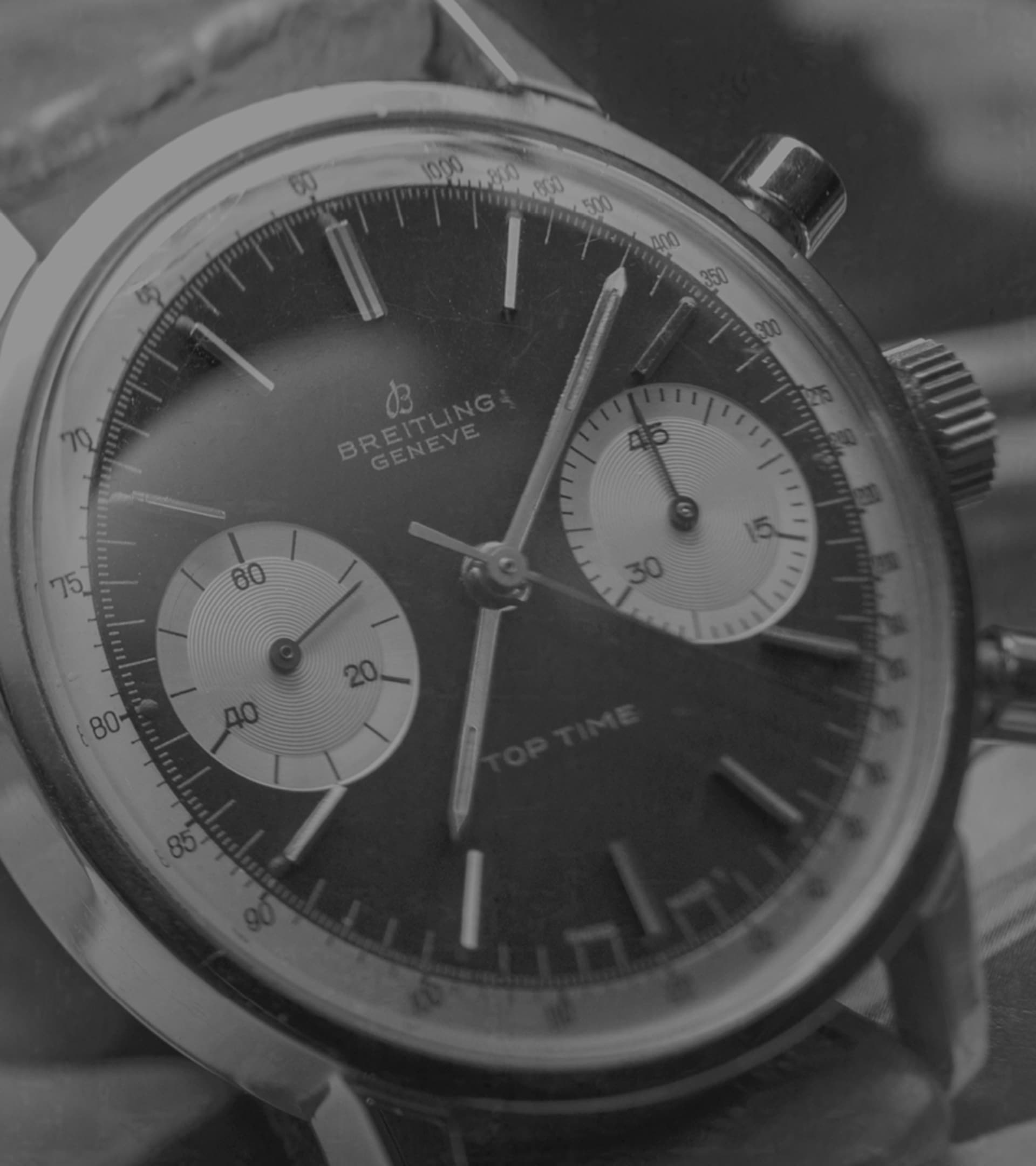

Top Time
THE CHRONO WAY OF LIFE
It’s Friday. You leave the office, drop the top on your convertible, turn up the music, and head out for a night with friends—dancing to the Beatles and living in the moment. The baby-boomer generation of the 1960s had a truly unprecedented energy and a desire to live extraordinary lives. Young people were pushing boundaries, embracing freedom and fun, wanting to enjoy life to its fullest. Willy Breitling paid close attention to these changes—as he had an intuitive understanding of how important it was to speak directly to this new audience and improve the image of the mechanical chronograph—a watch that was waning in popularity.
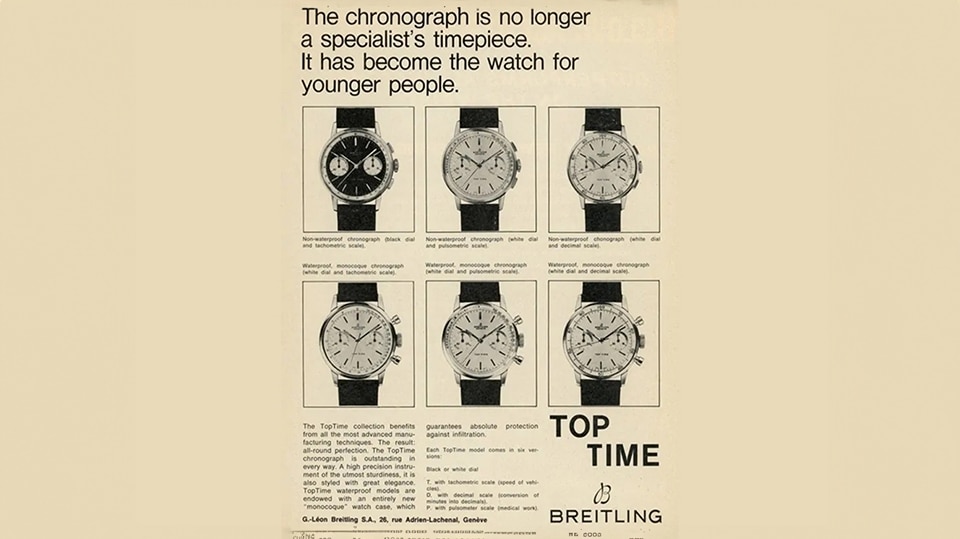

As Willy Breitling declared in early 1964, "We are sweeping into the field of youth, and we are going to speak their language." The Top Time’s success was immediate, redefining the chronograph as more than just a specialist’s tool: "It has become the watch for younger people."
To make sure it was suitable for any daily adventures, the Top Time featured improved water-resistance with a monocoque construction. Customers could choose between three different outer scales: tachymeter, pulsometer, or decimal.
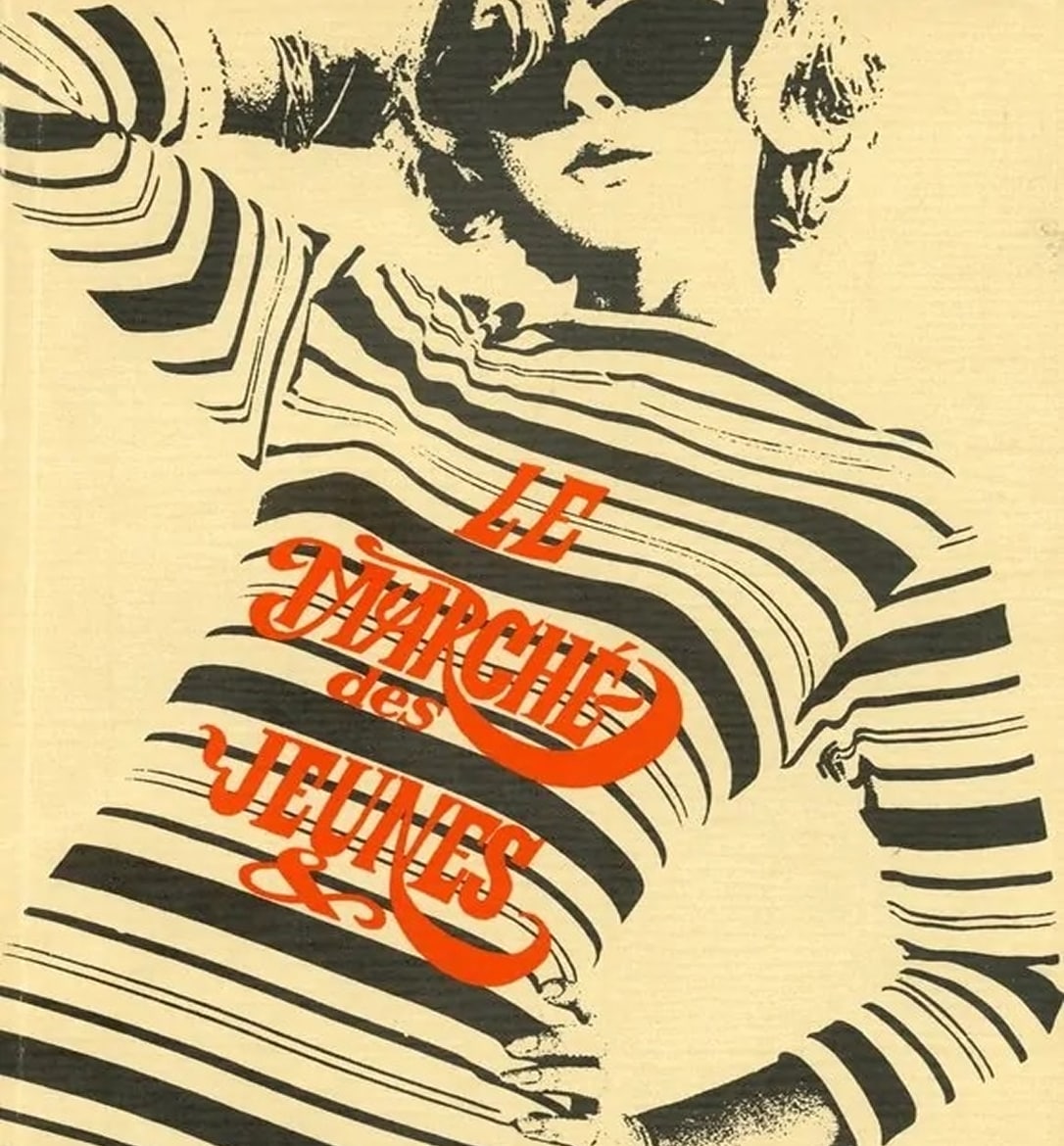

TOP TIME! LIVE LIFE UP TO THE HILT!
To complement the ever-successful Navitimer—worn by the likes of musician Miles Davis and F1 driver Graham Hill—Willy Breitling developed a sportier, more contemporary collection. Breaking with traditional design codes, he tailored these new models to the dynamic lifestyle of a younger generation.
In fact, he had a very clear understanding of what this new clientele desired: “Young people won’t buy the kind of watch dad wears. They will be interested in a competition watch with special dials and push buttons. A watch that will ‘impress the boys’—a watch that is both impressive and really elegant.”
In 1964, Breitling introduced the new Top Time as an affordable chronograph with simple yet elegant lines and exceptional quality and precision—the perfect watch for fashion-conscious young men and women living active lives. The name of this new collection—Top Time—was deliberately kept short, catchy, and English to underline the modern design of the collection and the energy of the time.
Discover the timepieces that defined us
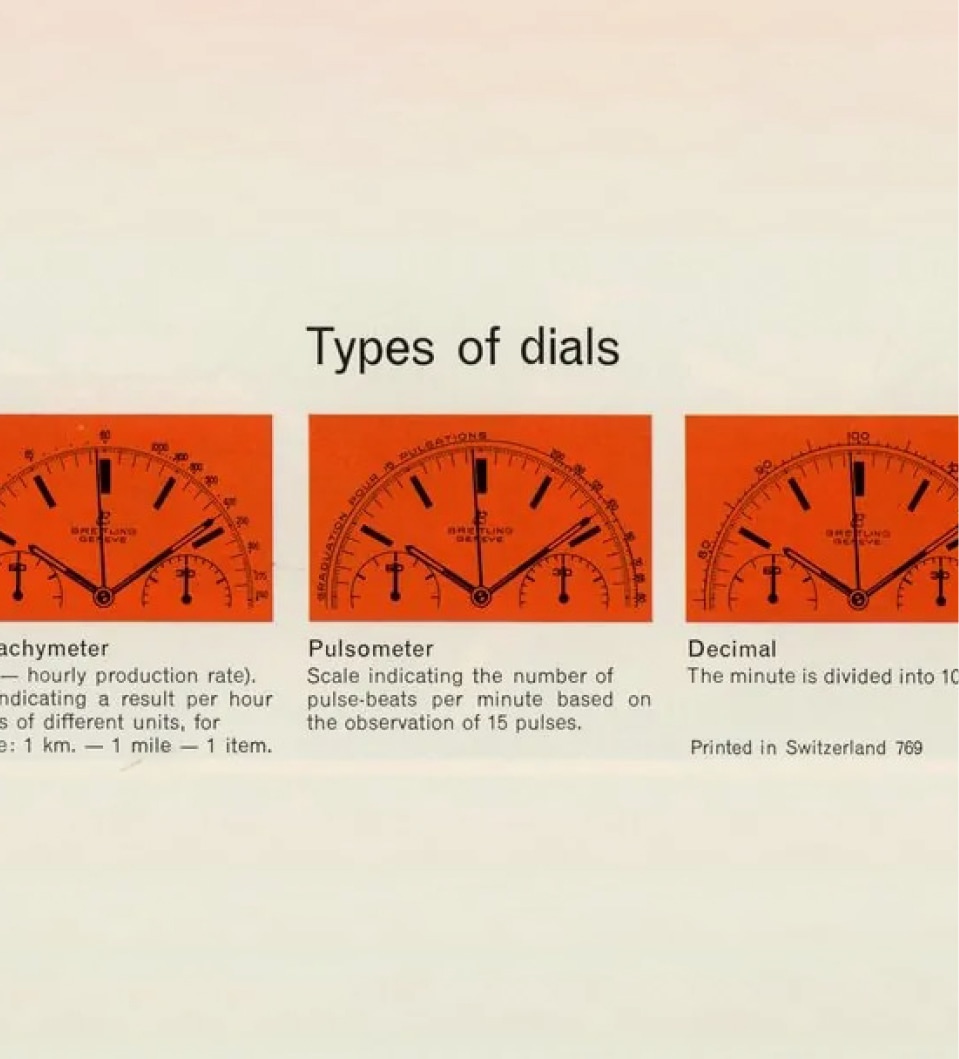

A FUNKY DIAL FOR TRENDY CUSTOMERS
Breitling introduced a striking, unconventional dial that made the Top Time the absolute must-have watch of the time. This special design was nicknamed “Zorro” by collectors.
The cushion-shaped Top Time was also offered in numerous metal and dial variations, combining function with style and appealing to men and women who appreciate the bold lines of a chronograph with a stylish and unconventional twist. The chronograph was no longer just a functional tool—it was a way for the wearer to express their own style and stand out from the crowd.
TACHYMETER SCALE: For drivers who want to calculate their average speed when racing.
PULSOMETER SCALE: For athletes who want to calculate their average heart rate after their activity.
DECIMAL SCALE: For those who prefer to simplify timing using a scale that shows hundredths of a minute.
Always aware that style is key for the brand’s young audience, Willy Breitling offered different dial variations of the Top Time, ranging from classic to more daring looks. This new chronograph was available in different materials, including a sportier stainless-steel model, a more luxurious solid gold version, and a stylish gold-plated variant. As a symbol of freedom and emancipation from established design codes, the Top Time was quickly adopted by young adults who didn’t want to wear the classic mechanical watches their parents wore.
Discover the timepieces that defined us
The first version of the Top Time ref. 810 had a very elegant case with smooth lugs and a clean dial design with white contrasting subdials. Later, in 1967, the case evolved into a bulkier design, emphasizing the sporty nature of the watch. Different dial versions were offered, including a rare 24-hour dial made for travelers. With its 12-hour totalizer, the Top Time ref. 810 was suited to timing events of longer durations, with later models being nicknamed “long playing.”
Breitling introduced the “Sprint” alongside the Top Time in 1967—a model that entailed a rotating bezel to keep track of specific times such as departure times. This watch featured a modern design and bold, exotic dials that had previously made the Top Time a success. One of the most popular Sprint dial designs was the “Surfboard,” which had a large, colorful horizontal surfboard shape across the dial.
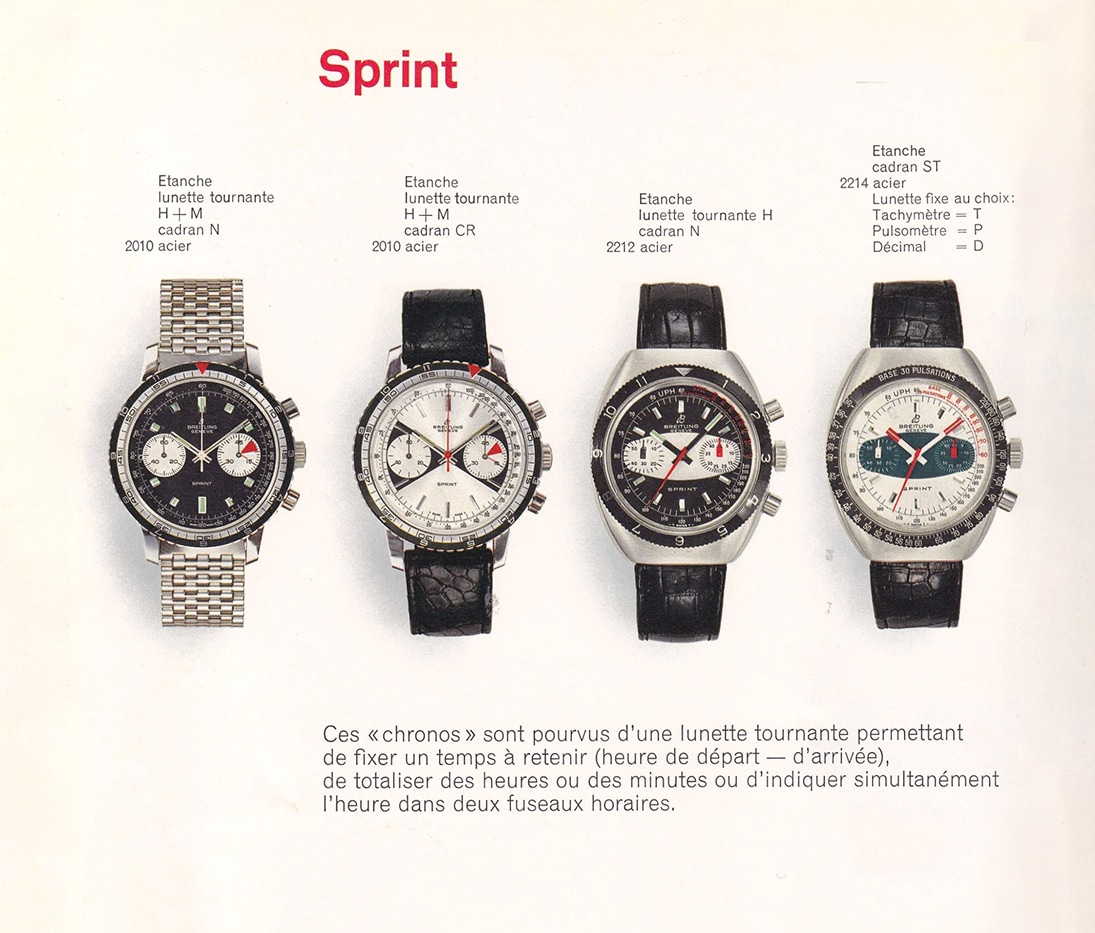

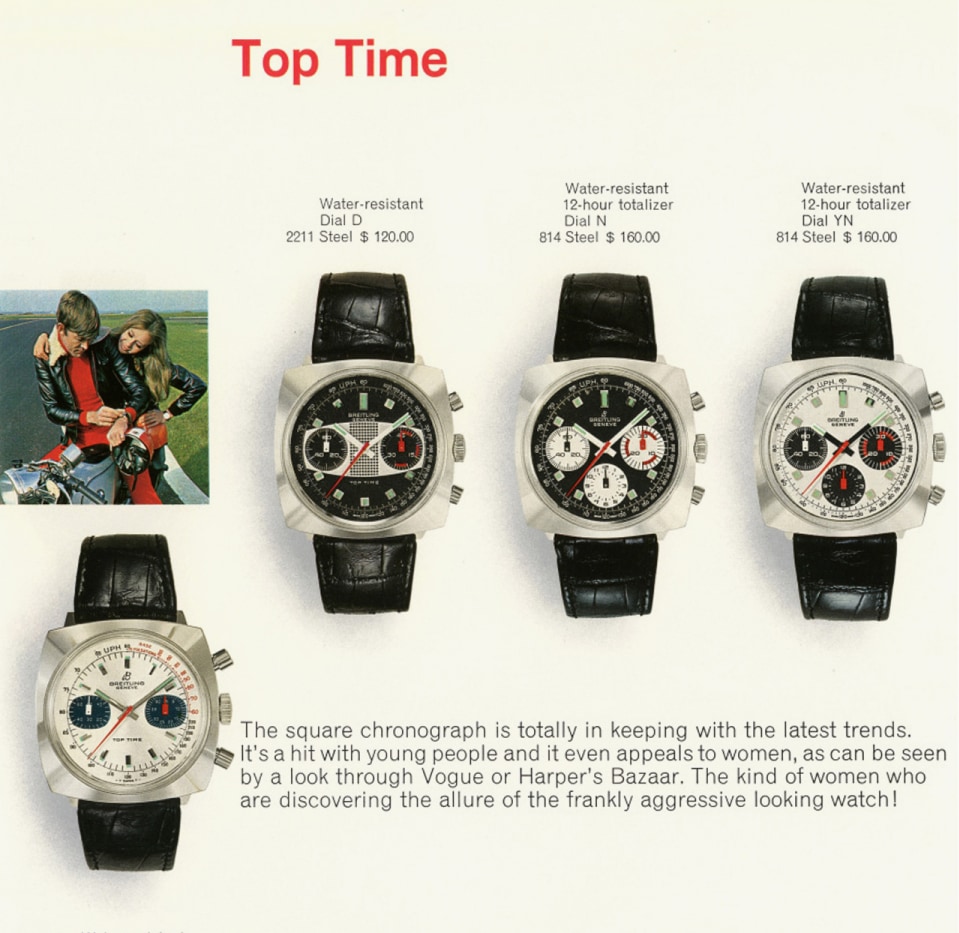

A TREND FOR EXOTIC DIALS
The success of the Top Time confirmed Willy Breitling’s belief that daring dials and exclusive case designs would make the mechanical chronograph a cool accessory for a younger audience. In the late 1960s, a few new Top Time variations were launched, including one with a so-called “Racing” dial.
Following the trend for larger watches in the early 1970s, Breitling launched a larger Top Time with an impressive bezel diameter of 43 mm. However, it kept the inner tachymeter that made the first Top Time the ideal urban watch. With this new watch, Breitling demonstrated its flair for adapting its products to reflect current trends and customers’ lifestyles once again. Today, an archive of avant-garde Top Time and Sprint collections gives Breitling a unique source of inspiration for new, unconventional chronographs.

























































